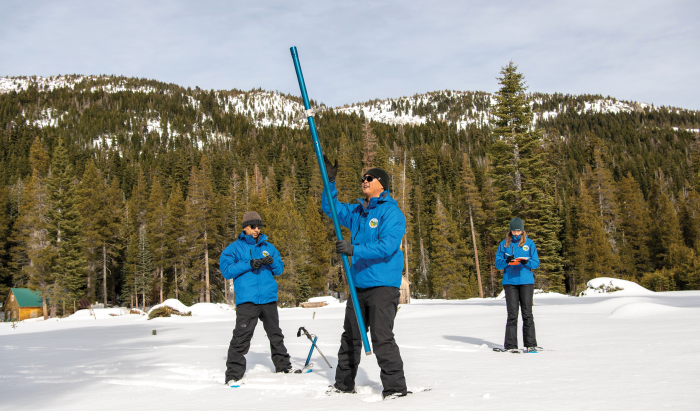
The first manual snow survey of the year on January 2 showed a healthy snowpack of 33.5 inches, according to the California Department of Water Resources (DWR).
That snow depth translates to a snow water equivalent of 11 inches, 97% of average for the Phillips Station in the Sierra. The department uses the snow water measurement to forecast spring runoff.
DWR’s electronic readings from 130 stations throughout the state show a statewide snowpack of 9.3 inches, 90% of average. Last year, the statewide reading was 67% of average.
DWR Director Karla Nemeth commented that precipitation in Northern California is still below average for this time of year. “We must remember how variable California’s climate is and what a profound impact climate change has on our snowpack.”
“It’s still too early to predict what the remainder of the year will bring in terms of snowpack,” said Sean de Guzman, chief of DWR’s Snow Surveys and Water Supply Forecasting Section. “Climate change is altering the balance of rain and snow in California.”
DWR explains that continued warming from climate change is expected to lead to fewer, more intense storms affecting snow distribution across elevations, the pattern of snow accumulation and rate of snow melt.
Typically, California receives about 75% of annual precipitation during December, January and February, with the bulk of the precipitation coming from atmospheric rivers, DWR reports.
DWR has conducted manual snow surveys at Phillips Station since 1964, recording both depth and snow water equivalent. Snow water equivalent is the depth of water that theoretically would result if the entire snowpack melted at once.
As it melts in the spring and early summer, the snowpack supplies, on average, about 30% of the state’s water needs.

